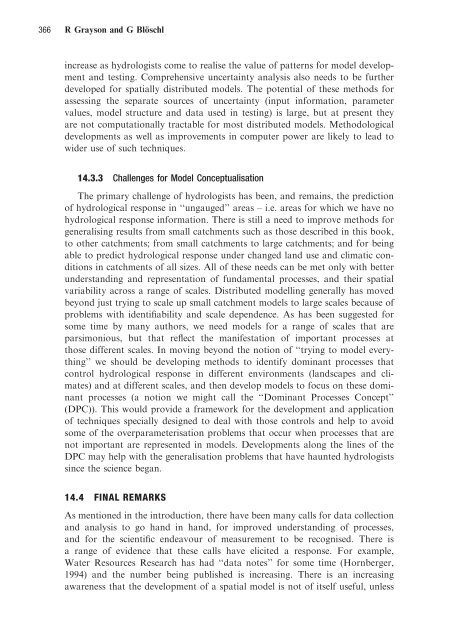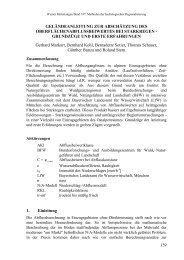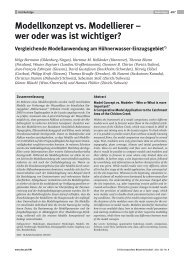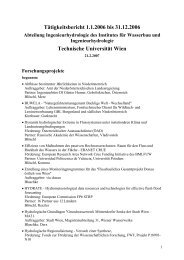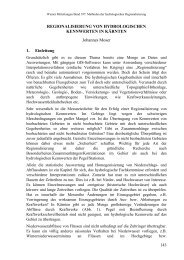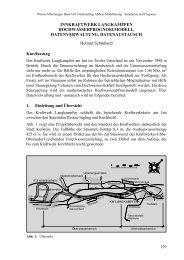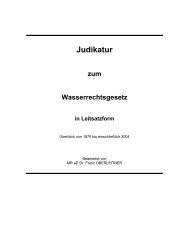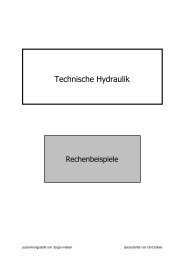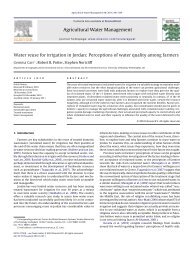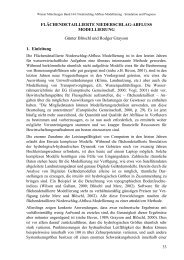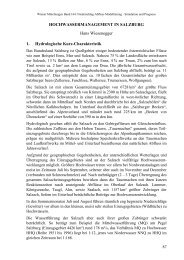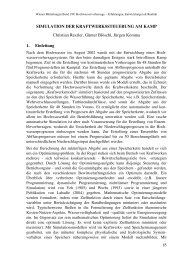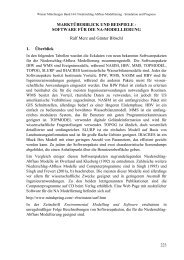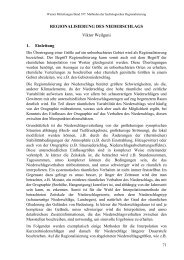Summary of Pattern Comparison and Concluding Remarks
Summary of Pattern Comparison and Concluding Remarks
Summary of Pattern Comparison and Concluding Remarks
You also want an ePaper? Increase the reach of your titles
YUMPU automatically turns print PDFs into web optimized ePapers that Google loves.
366 R Grayson <strong>and</strong> G Blo¨ schl<br />
increase as hydrologists come to realise the value <strong>of</strong> patterns for model development<br />
<strong>and</strong> testing. Comprehensive uncertainty analysis also needs to be further<br />
developed for spatially distributed models. The potential <strong>of</strong> these methods for<br />
assessing the separate sources <strong>of</strong> uncertainty (input information, parameter<br />
values, model structure <strong>and</strong> data used in testing) is large, but at present they<br />
are not computationally tractable for most distributed models. Methodological<br />
developments as well as improvements in computer power are likely to lead to<br />
wider use <strong>of</strong> such techniques.<br />
14.3.3 Challenges for Model Conceptualisation<br />
The primary challenge <strong>of</strong> hydrologists has been, <strong>and</strong> remains, the prediction<br />
<strong>of</strong> hydrological response in ‘‘ungauged’’ areas – i.e. areas for which we have no<br />
hydrological response information. There is still a need to improve methods for<br />
generalising results from small catchments such as those described in this book,<br />
to other catchments; from small catchments to large catchments; <strong>and</strong> for being<br />
able to predict hydrological response under changed l<strong>and</strong> use <strong>and</strong> climatic conditions<br />
in catchments <strong>of</strong> all sizes. All <strong>of</strong> these needs can be met only with better<br />
underst<strong>and</strong>ing <strong>and</strong> representation <strong>of</strong> fundamental processes, <strong>and</strong> their spatial<br />
variability across a range <strong>of</strong> scales. Distributed modelling generally has moved<br />
beyond just trying to scale up small catchment models to large scales because <strong>of</strong><br />
problems with identifiability <strong>and</strong> scale dependence. As has been suggested for<br />
some time by many authors, we need models for a range <strong>of</strong> scales that are<br />
parsimonious, but that reflect the manifestation <strong>of</strong> important processes at<br />
those different scales. In moving beyond the notion <strong>of</strong> ‘‘trying to model everything’’<br />
we should be developing methods to identify dominant processes that<br />
control hydrological response in different environments (l<strong>and</strong>scapes <strong>and</strong> climates)<br />
<strong>and</strong> at different scales, <strong>and</strong> then develop models to focus on these dominant<br />
processes (a notion we might call the ‘‘Dominant Processes Concept’’<br />
(DPC)). This would provide a framework for the development <strong>and</strong> application<br />
<strong>of</strong> techniques specially designed to deal with those controls <strong>and</strong> help to avoid<br />
some <strong>of</strong> the overparameterisation problems that occur when processes that are<br />
not important are represented in models. Developments along the lines <strong>of</strong> the<br />
DPC may help with the generalisation problems that have haunted hydrologists<br />
since the science began.<br />
14.4 FINAL REMARKS<br />
As mentioned in the introduction, there have been many calls for data collection<br />
<strong>and</strong> analysis to go h<strong>and</strong> in h<strong>and</strong>, for improved underst<strong>and</strong>ing <strong>of</strong> processes,<br />
<strong>and</strong> for the scientific endeavour <strong>of</strong> measurement to be recognised. There is<br />
a range <strong>of</strong> evidence that these calls have elicited a response. For example,<br />
Water Resources Research has had ‘‘data notes’’ for some time (Hornberger,<br />
1994) <strong>and</strong> the number being published is increasing. There is an increasing<br />
awareness that the development <strong>of</strong> a spatial model is not <strong>of</strong> itself useful, unless


